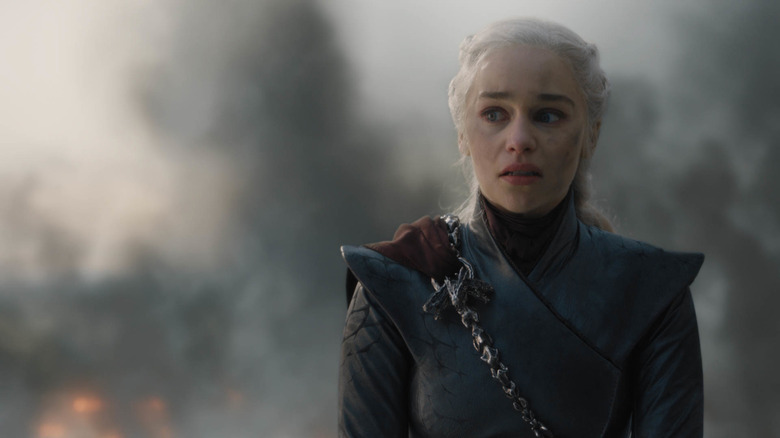
The business of filmmaking -- or, in this case, the process of deciding whether to move forward with a show or not -- is not for the faint of heart. HBO has built itself quite a legacy, providing prestige and consistently high quality programming that further blurs the line between movie and television. "Game of Thrones" in particular became a dramatic example of this, with budgets of individual episodes in the final season eventually exceeding that of entire feature films. But such expenses come with quite a high amount of risk, which the network would soon learn the hard way.
According to James Andrew Miller's new book "Tinderbox: HBO's Ruthless Pursuit of New Frontiers," which chronicles the inner workings of HBO's path to success over the decades and recently revealed original "A Song of Ice and Fire" author George R.R. Martin's immense dissatisfaction with the trajectory of the show, the network poured more than $30 million into the production of a pilot episode for a proposed spin-off. Essentially, HBO opted for a risky (and wildly expensive) proof of concept to convince themselves to fully commit and move forward with the series. This didn't happen, of course, but the details we're now learning about are certainly eye-opening.
According to Entertainment Weekly, then-WarnerMedia chairman Bob Greenblatt states in Miller's book:
"They had spent over $30 million on a 'Game of Thrones' prequel pilot when I got there. And when I saw a cut of it in a few months after I arrived, I said to [HBO chief content officer] Casey [Bloys], 'This just doesn't work and I don't think it delivers on the premise of the original series.' And he didn't disagree, which actually was a relief. So we unfortunately decided to pull the plug on it. There was enormous pressure to get it right and I don't think it would have worked."
Of course, this wouldn't be the first time that HBO faced an impossible decision with "Game of Thrones." The pilot episode of the original series infamously required a complete overhaul, resulting in several instances of recasting (including one that led to Emilia Clarke getting the role of Daenerys Targaryen). In that light, it's not completely unheard-of that the proposed spin-off would ultimately meet its end this way ... but it did lead to the greenlight for another series.
Win Some, Lose Some

Fans of the original series will soon have "House of the Dragon" to look forward to, the prequel/spin-off series that takes place hundreds of years before the events of "Game of Thrones." According to this report, however, the loss of the untitled Naomi Watts-led series directly led to HBO giving the go-ahead to this one. As Greenblatt is further quoted in the book:
"I'm the one who encouraged Casey to green-light it to series. I said, 'let's not risk $30 million on a pilot.' You can't spend $30 million on a pilot and then not pick it up. So I said, 'Let's not make a pilot. Let's get a great series that we feel good about, and just make it. Or not.' They made the first pilot because they were protecting their own downside and protecting that brand, which I understand, but it was critical that we somehow continue that franchise and move quickly, which meant getting the series into production ASAP. That's always a nail-biter, but I think the new show that is coming will be incredible."
Ultimately, it's a shame that the initial spin-off series never made it to the finish line, if only because this became the second major project to fall apart for director and executive producer S.J. Clarkson, who was originally meant to direct the fourth "Star Trek" film. On the bright side, fans now have "House of the Dragon," "10,000 Ships," "Sea Snake," and now "Tales of Dunk and Egg" to tide them over. "House of the Dragon" will debut on HBO sometime in 2022.
Read this next: Single-Season '80s Sci-Fi And Fantasy Shows That Deserve A Second Shot
The post HBO Spent Over $30 Million on the Failed Game of Thrones Spin-off appeared first on /Film.
0 Comments